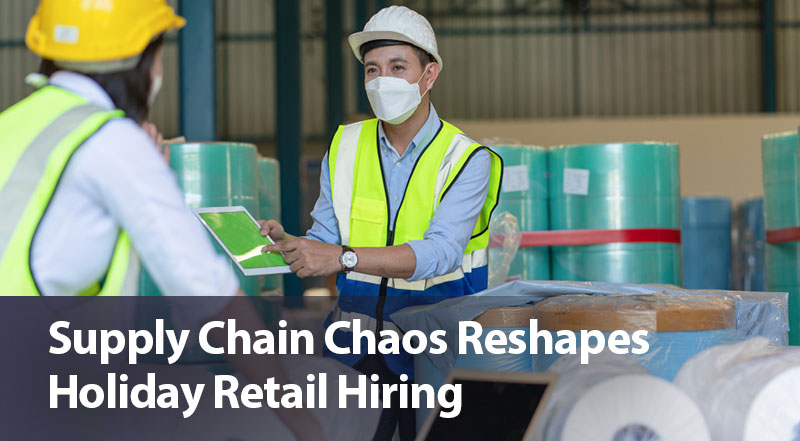Global supply chain bottlenecks are feeding on one another, with shortages of components and flooding prices of critical raw materials squeezing manufacturers around the world. The supply shocks have been already shown economic shocks in some regions of countries. Thus, factories and retailers have faced a shortage in workforces. It is already too late to save all the Christmas retail season in many cases, as overwhelmed worldwide transportation networks limit supply – down to the home décor. “It would be wise to order your Christmas tree early”, said Jami Warner, executive director of the American Christmas Tree Association.
Retailers seek to hire more workers
as Holiday Approach
Walmart, the country’s largest
private employer with around 1.6 million
U.S. workers, has announced a string of
hiring goals in recent months. As the
holiday comes closer, Walmart wants to
ensure that they are ready to help its
customers. In which, retailers are ready
to compete with eCommerce platforms for
hourly staff in a tight labor market.
Julie Murphy, chief people officer for
Walmart U.S. has announced that most
positions will be offered as long-term
store jobs and aimed to hire 20,000
warehouse staff to keep products flowing
to stores and shoppers’ homes. She has
also highlighted that for most of the
roles, the minimum wages will be
increased to $12 an hour and the average
wages to $16.40. Heading into the
holidays last year Walmart said it aimed
to hire around 20,000 seasonal workers
in eCommerce warehouses to meet surging
online demand due to pandemic buying
trends.
Amazon aims to hire 125,000 and more
workers after hiring hundreds of
thousands of employees during the
pandemics. Also, Target Corp. aims to
hire 100,000 seasonal workers and around
30,000 warehouse employees to support
their holiday peak season.
Thus,
most retailers are working to hire large
numbers of staff ahead of holidays at a
time when workers are scarce in many
industries. Businesses from retailers
and restaurants to amusement parks and
manufacturers are competing for workers,
in some cases offering pay raises,
hiring bonuses, and other incentives.
Kroger Extends Reach with New
Automated Grocery Delivery
Site
While the shortage of workers and
problems of supply-chain raises, Kroger
Co. is using its partnership with
grocery – warehouse technology provider
Ocado Group to extend its reach with new
automated fulfillment centers for online
orders in the Northeast, Florida, and
California. Ocado’s automation uses
software, robotic and artificial
intelligence to operate a warehouse with
a minimum of humans in spaces that are
more tightly confined than traditional
distribution centers. Such highly
automated fulfillment sites are aimed at
delivering products faster and
efficiently through the distribution
system to customers’ homes, potentially
providing a speed and cost advantage in
the growing business of online grocery
shopping.
Kroger, which operates Ralphs, Harris Teeter, and Dillons chains along with its name-brand stores, has been investing in online sales and delivery for several years, and the surge in online shopping since the pandemic began has given the effort more urgency. Investments in grocery delivery and automation come with the risk that consumers won’t want to absorb the extra costs of grocery delivery, said Sucharita Kodali, a vice president and principal analyst at Forrester Research Inc, who focuses on e-commerce and consumer behavior. However, retailers are scaling up to compete with the rapid growth in the market of Amazon.com Inc. and Walmart Inc in its eCommerce fulfillment platforms.
Resources:





